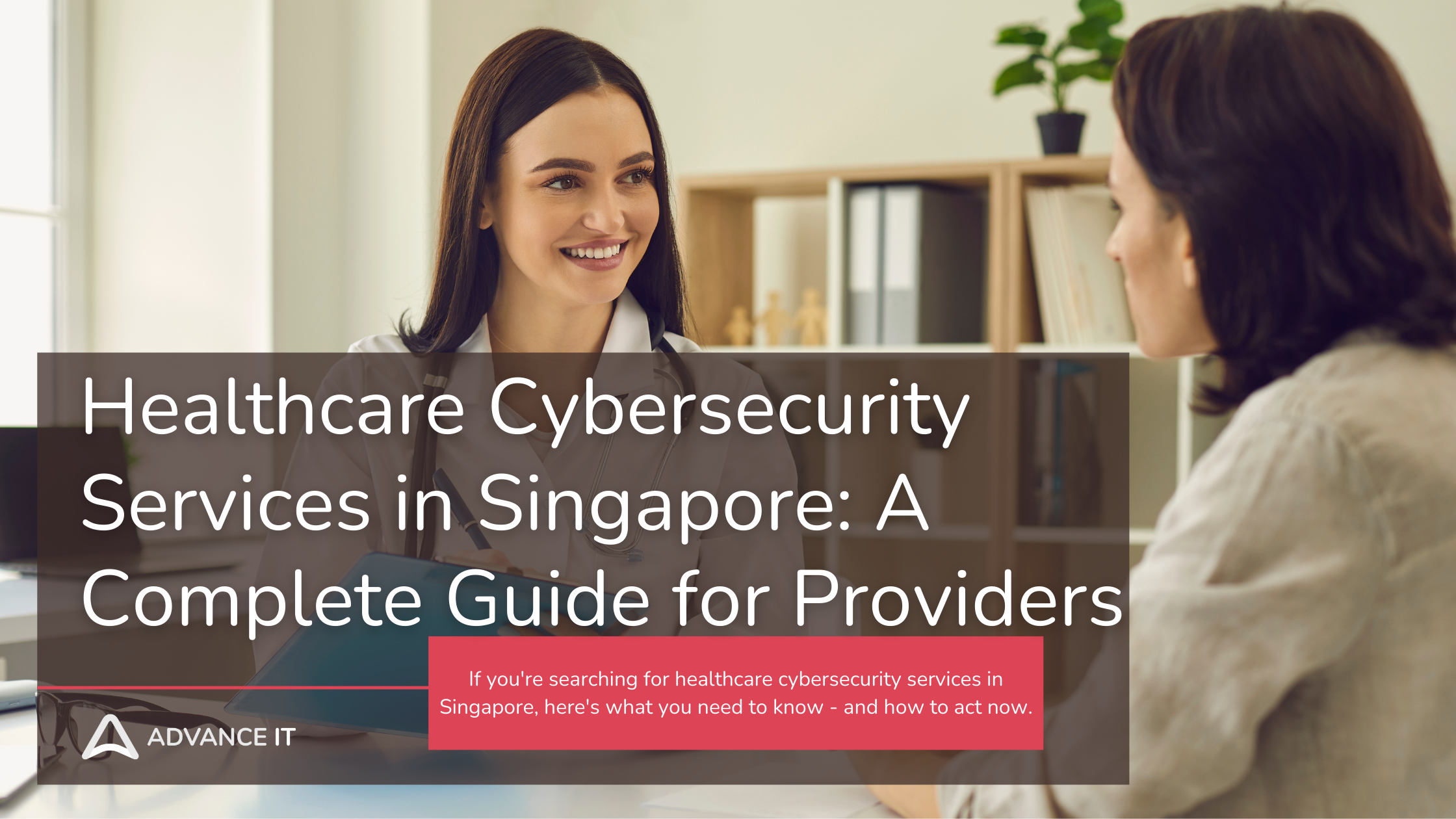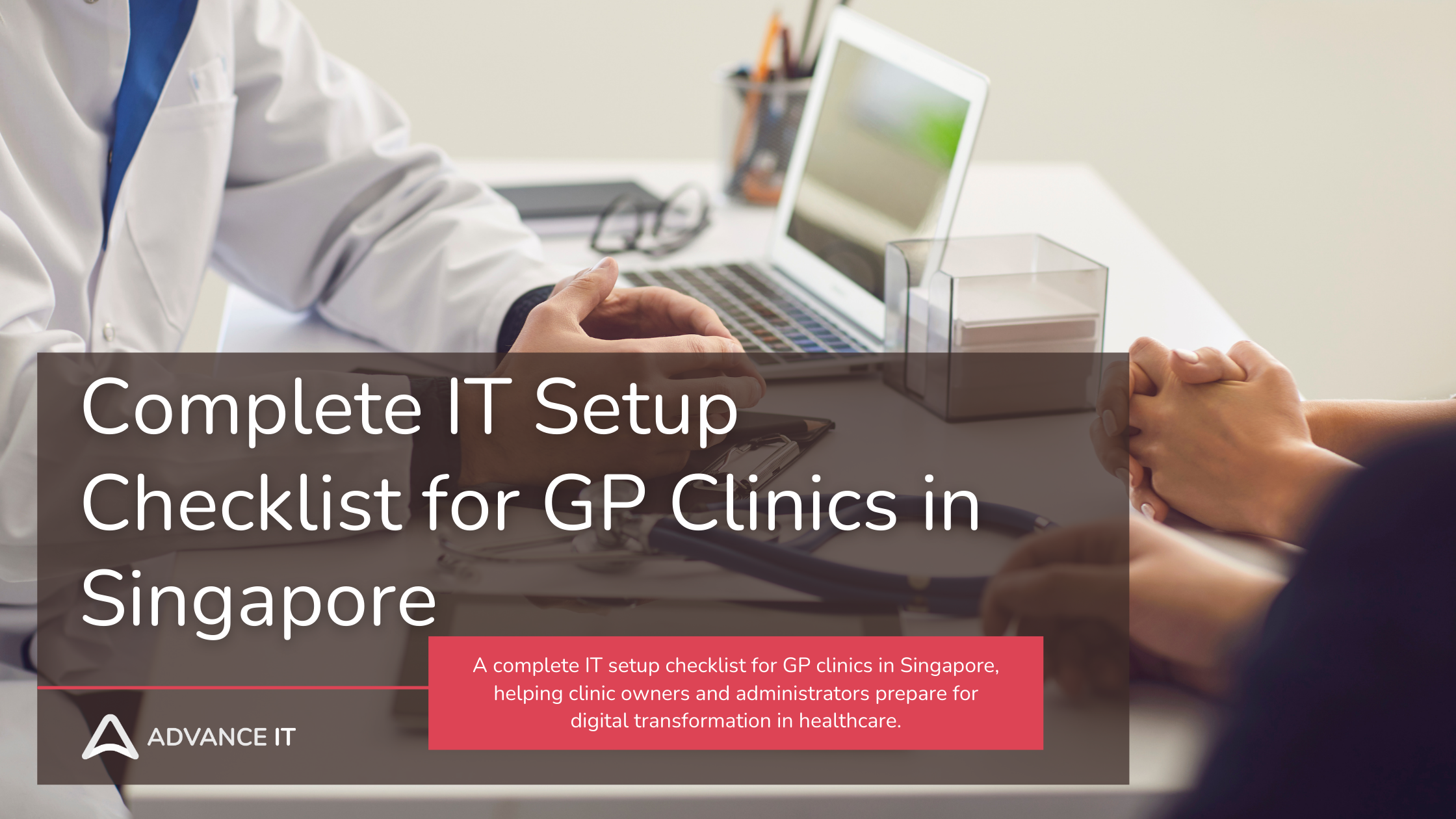Clinic IT Security: Top 5 Mistakes to Avoid in Singapore
Securing your clinic's IT infrastructure isn't just about keeping the lights on - it's about safeguarding patient trust, ensuring uninterrupted care, and complying with evolving regulations. If you're Googling "clinic IT security Singapore," you're in the right place. Here's an in-depth, real-world guide to the Top 5 Mistakes to Avoid - and how to fix them proactively.
Why This Matters Now
Healthcare facilities are prime targets for cyberattacks. Singapore's SingHealth breach in 2018 compromised national-level medical data and was attributed to delayed patching, poor staff awareness, and inadequate IT governance.
Under the upcoming Health Information Bill (HIB), clinics must meet stringent cyber and data security standards - covering everything from access controls to third-party vendor management.
Top 5 Clinic IT Security Mistakes (And How to Fix Them)
1. Skipping Security Patches
Why it's risky: Unpatched systems are like unlocked doors for hackers. In the SingHealth incident, outdated software opened the door to attackers.
Fix it:
Set up automated patch management.
Schedule monthly maintenance windows.
Monitor for vulnerabilities in medical devices using the HSA's best practices in cybersecurity.
2. Neglecting Proactive Monitoring
Why it's risky: Threats like ransomware and phishing often go unnoticed without real-time monitoring. In 2024, clinics faced a surge in such attacks, disrupting operations nationwide.
Fix it:
Use endpoint protection and intrusion detection systems.
Employ managed SOC-like monitoring for 24/7 threat response.
Regularly review logs and system alerts.
3. Weak Cyber Hygiene (Phishing & Insider Threats)
Why it's risky: Human error exposes clinics to serious breaches. SingHealth’s data was harvested after staff fell through basic security training and response protocols.
Fix it:
Conduct regular staff phishing simulations.
Mandate frequent security awareness training.
Implement role-based access controls and track audit logs.
4. Ignoring Medical Device Security
Why it's risky: IoMT (Internet of Medical Things) devices often run outdated firmware, making them vulnerable to compromise. A healthcare facility in Singapore was hit by ransomware after weaknesses in an IoT device were exploited.
Fix it:
Enforce secure device lifecycle management (from deployment to decommissioning).
Use network segmentation and SBOMs (Software Bill of Materials) to track embedded software HSA.
5. Poor Vendor & Third-Party Oversight
Why it's risky: Many data breaches stem from third-party access. HIB guidelines stress that clinic vendors must support healthcare security standards.
Fix it:
Audit vendor cybersecurity practices.
Require SLAs with security clauses.
Enforce data protection and breach response responsibilities in contracts.
Quick Reference: Avoid These Mistakes
Final Word: Act Before You’re Forced To
The SingHealth breach wasn’t just a landmark incident - it was a warning. By fixing these 5 mistakes today, clinics can protect patient data, avoid disruptions, and stay audit-ready.
Need help shoring up your clinic’s IT defenses? Contact us, to get a free Clinic IT Security Consulting free tailored for Singapore healthcare providers.
····························································
With over 15 years of experience and a strong focus on IT support and Managed IT, we’re proud to have 99.5% of our customers staying with us long-term.
‣ Website: https://www.advanceit.sg/
‣ Address: 8 Burn Road, #11-11 Trivex Singapore 369977
‣ Email us at: contact@advanceit.sg
‣ Call our team: +65 6592 8458


















With years of experience supporting clinics, we help healthcare providers reduce downtime, improve compliance, and focus on what matters most - patient care.